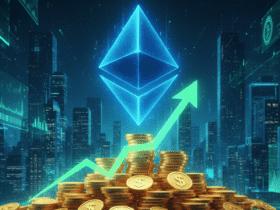Y2K Crisis – India’s IT industry was born
In the late 1990s, the Y2K bug was afraid that many computer systems would crash as soon as the year 2000 came. American and European companies needed cheap and skilled programs to update the software immediately, but there was less talent. India’s engineering colleges came out and English -speaking programs caught this opportunity.
Companies like TCS, Infosys and Wipro took Y2K projects. According to NASSCOM, between 1998-2001, India acquired $ 2.5 billion Y2K contracts. At that time many Indian programs could not go to America due to the limit of H-1B visa and strict investigation. As a result, companies shifted work in India itself. New offices in Bengaluru and Hyderabad opened and IT exports increased from $ 4 billion to $ 17.7 billion in 2005. This was the first major boom of the IT sector of India.
2008 Financial Crisis and Offsoring expansion
The 2008 global economic recession forced American companies to do cost cuttings. To save local jobs, the US government increased strictness on H-1B visas. Visa rejections increased and the approval rate declined from 80% to 60%. India also benefited from this. American companies chose cheap programmers and support teams in India instead of expensive H-1B workers. Indian IT companies started giving software development and back-end support for banking and financial sectors. India’s IT-BPO exports increased from $ 33 billion to $ 69 billion between 2008-2012. Many global companies such as Goldman Sachs and JP Morgan opened big offices in Bengaluru and gave thousands of jobs.
Trump implemented the ‘Buy American, Hire American’ policy in 2017. This made it difficult to take H-1B visa. The approval rate declined from 75% to 62%. American revenue of Indian companies like Infosys and TCS declined by 5-7%. But Indian companies resolved it. He increased off -showing up to 70% and started new services like AI, Cloud and Cyber Security in India. Between 2017-20, more than 1,400 Global Capability Centers (GCCs) were formed in India and an export industry of $ 100 billion stood. Many Indian engineers returned from America and started startups. Meanwhile, more than 1,000 new startups were made in Bengaluru, in which companies like Razorpay and Zerodha came forward.
New fees of 2025 – New round of reverse brain drain
Now $ 100,000 H-1B fees are very expensive for small American startups. Big companies are also increasing their centers in India so that the cost is reduced. Users are writing on social media- H-1B Fee Hike = India’s Gain i.e. now Indian engineers will work here instead of going to America. This is a big opportunity for India. There are already more than 100 unicorn startups in India. Nasscom is estimated that by 2030 India will have more than 2,400 GCCs and 50 lakh new jobs will be made. Returning talent will start new businesses in sectors like AI, Fintech and Healthtech.
India can become a tech leader
History suggests that whenever America banned H-1B, India converted it to the spot. Y2K gave birth to the IT service industry, 2008 increased offshoreing and Trump’s first term strengthened the startup culture. This fee of 2025 is another step towards making India a global tech leader. Yes, there are also challenges – good jobs and better infrastructure will be necessary for returning talent. But if India manages it properly, then the $ 100 billion IT export industry can reach $ 500 billion. America’s ‘Self-Gol’ can prove to be a ‘golden goal’ for India.






Leave a Reply